Advertisement
Published: September 26th 2013
After a few days in East Anglia, I took the train back up north. Changing trains in Peterborough I came across a group of men on the platform holding cans of beer and laughing loudly. Their accents were very familiar; I first noticed them when one, a heavyset, red-faced man wearing a beret, said something that phonetically transcribes as /ɑjɑlɹiʔman/ ('aw y'alreet man'😉. In the English spoken by the rest of the world, this roughly translates to 'you're welcome' or 'no thank you.'
And I realized how much I had missed Geordies.
On first impression, they looked like they would happily shove you onto the tracks if you crossed them, but they were genuinely friendly and polite, moving to let people go by and holding open a door for a woman with a stroller. Which just about sums up Newcastle and the north in general, I think: it seems rough but has the friendliest people in the country. Also a language that only starts to sound like English once you've heard it for a long time.
I didn't go all the way up to Newcastle after Cambridge, but spent two nights in York, which is the city
where I had visited the Christmas markets two years ago . York is beautiful. It is touristy and international (even Americans know about it!), with a giant gothic cathedral called the Minster, a town wall you can walk on, and a mishmash of twisting, turning streets and marketplaces.
One thing that surprised me was the number of white rose emblems throughout the city. The white rose was the symbol of the House of York during the War of the Roses, but as Cambridge University had clearly demonstrated with its shrine to Henry VI and its red-and-white rose symbol, that conflict has been over for centuries. Except I guess no one has told the family with the white rose on a flag in their backyard, or the people whose wrought-iron fence includes a painted white rose. It makes me want to go to Lancaster to see if anyone has told them either.

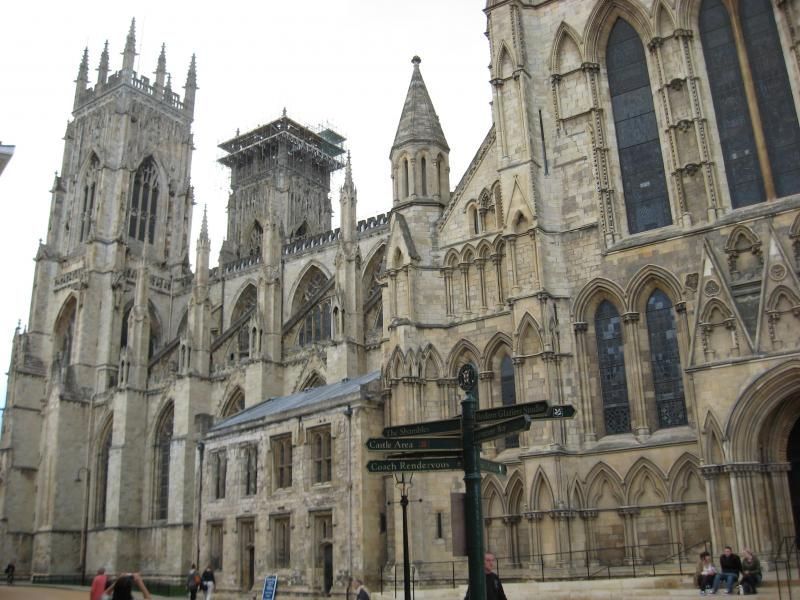

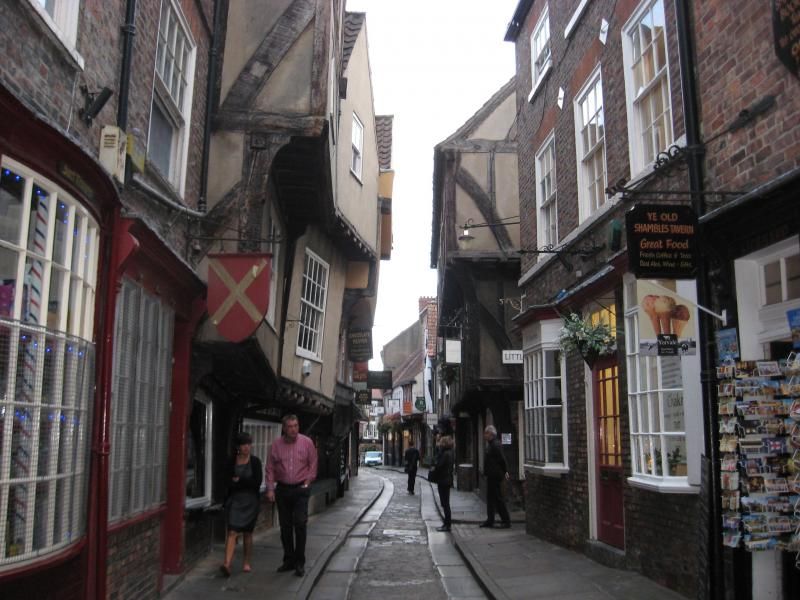
This is the Shambles, which I mentioned last time but mistakenly didn't visit. It connects to a small market square that (supposedly) dates from the Middle Ages, selling crafts and bread and produce and looking like everything you would expect from a medieval marketplace. Except for the teenage sellers on their smartphones, which might have been a little out of place back then.
I also took advantage of one of York's many ghost tours. Although I can't remember the name of it (some travel blogger I am), I remember that it met in front of the York Minster in the evening and lasted an hour. The guide was an older man in fancy Victorian dress with a booming voice and a hilarious tendency to over-dramatize. A few of the quotes I remember are:
'Please set your mobile phones to stun.'
'There are three things to ask yourself when you're crossing the road. First, is it a car? Second, is it a bicycle? Third, is it moving toward you? If the answer to any of these is yes, then
yes, they are trying to kill you.
Get out of the way.'
'North of Hadrian's wall, there was desolation, there were barbarians, there were...
Scots.'
'The sign says Minster Yard, but the actual address of the house is 5 College Street. Don't worry, York's like that.'
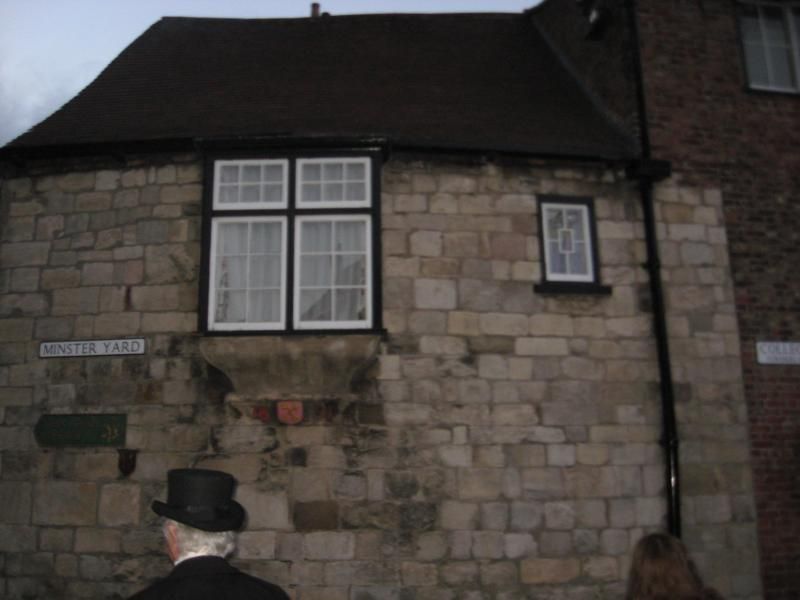
This is the house he was referring to. According to his story, in the middle ages a young girl was left inside to starve to death after her family died of the plague, because people didn't understand that she was immune and were too afraid to catch the sickness from her. Centuries later, a family moved into the house and the little boy who slept in the room where she died (the small window) reported seeing her and hearing her cry at night. Supposedly people still see her face in the window from time to time.
None of us saw or heard any ghosts, but the stories were good and horrible and sad, some more believable than others, one that actually freaked me out. Overall it's an entertaining and fascinating tour, whether or not you believe in ghosts. (Still not as scary as the Edinburgh one I went on in 2007, but no ghost tour has ever managed to live up to that, and I'm not sure that any will.)
I also took a day trip to Helmsley, a small town on the southern margin of the North York Moors, and Rievaulx Abbey about a two mile walk away.
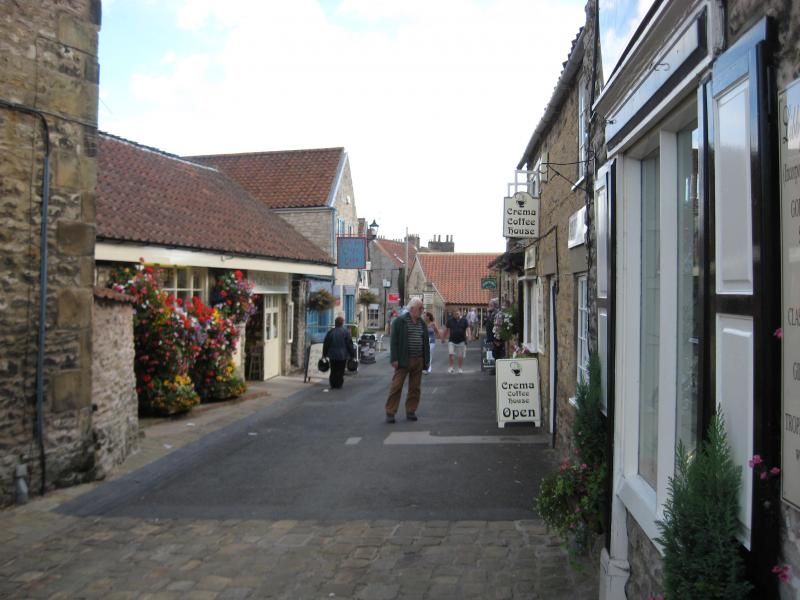
Helmsley is smaller than Wooler, with a typical town square and shop-lined streets, old churches and the ruins of a castle.

The town is very tourist-oriented, probably because of its location on the Cleveland Way, a 109-mile National Trail tracing the perimeter of the North York moors on three sides.
I actually walked a section of it last summer, a gorgeous part of the trail that follows the eastern coastline between Scarborough and Whitby. The section between Helmsey and Rievaulx, obviously, is very different, tracing the southwestern portion of the park.

I have mentioned before that I am a little bit obsessed with the North York Moors. When I was a kid, I absolutely loved 'The Secret Garden' (book and movie), and one time in high school I played Jane Eyre. Also I really enjoyed the book. When I studied abroad for the first time, I made sure to visit the North York Moors before I went home, and although public transit is fairly sparse in this region, I've been able to come back to different sections of the park a few times since I've lived in Newcastle. It is a beautiful place, and I highly recommend it. The walk between Helmsley and Rievaulx was no exception.
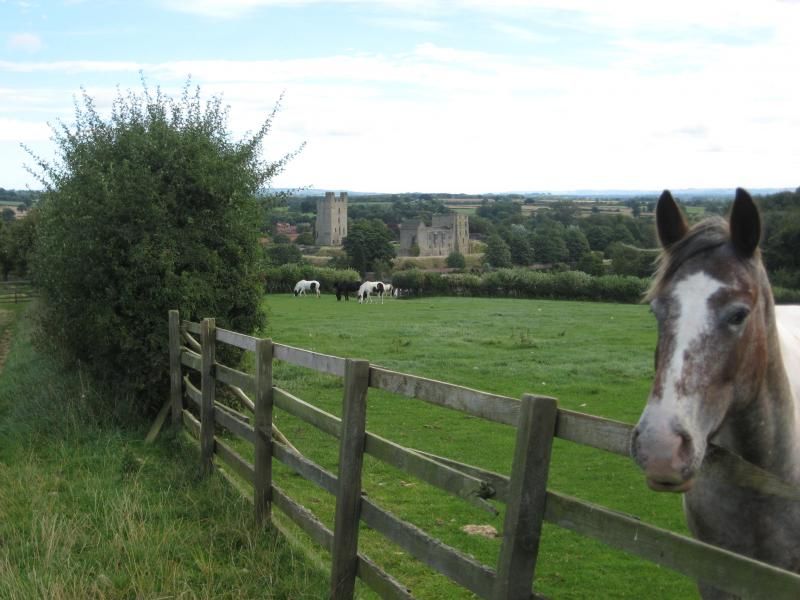
Shortly after I left Helmsley, this horse asked me for a picture with the castle in the background, so I obliged.
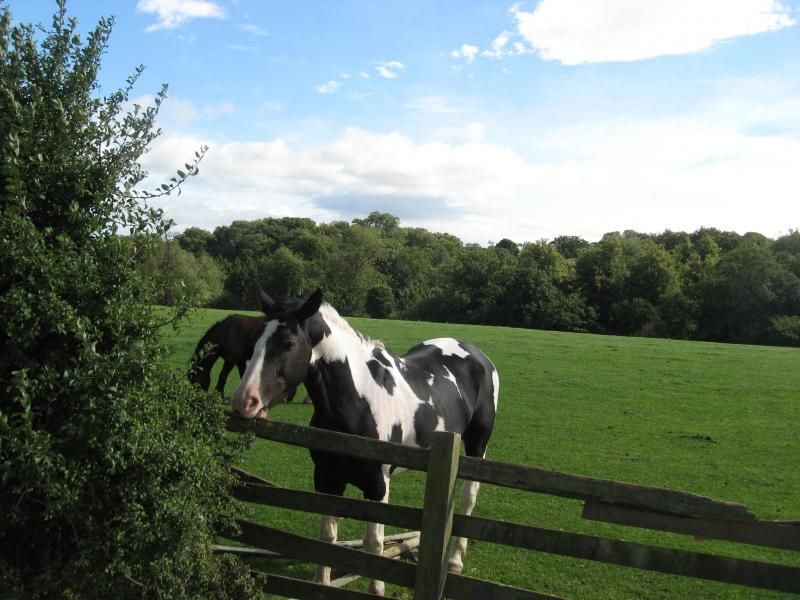
And then this one tried to eat and/or break down the fence. I'm not sure why. Can any horse-experts help me out?
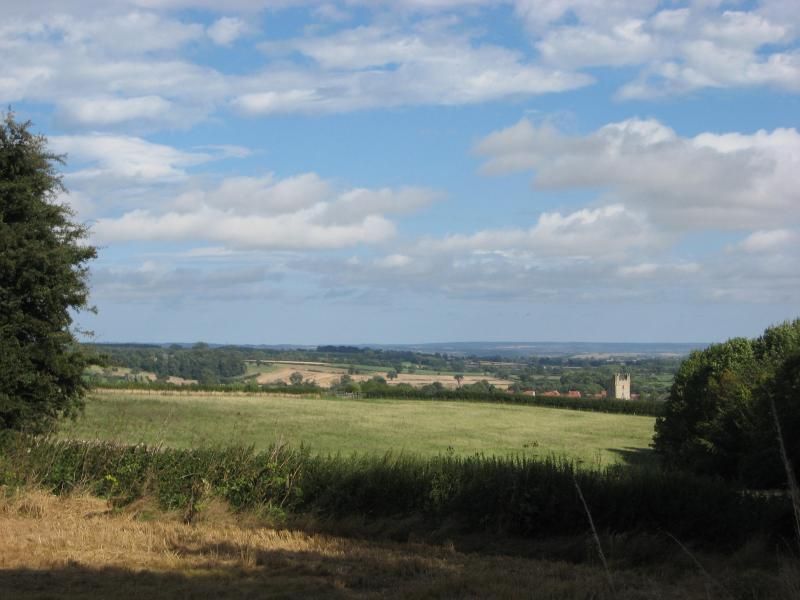
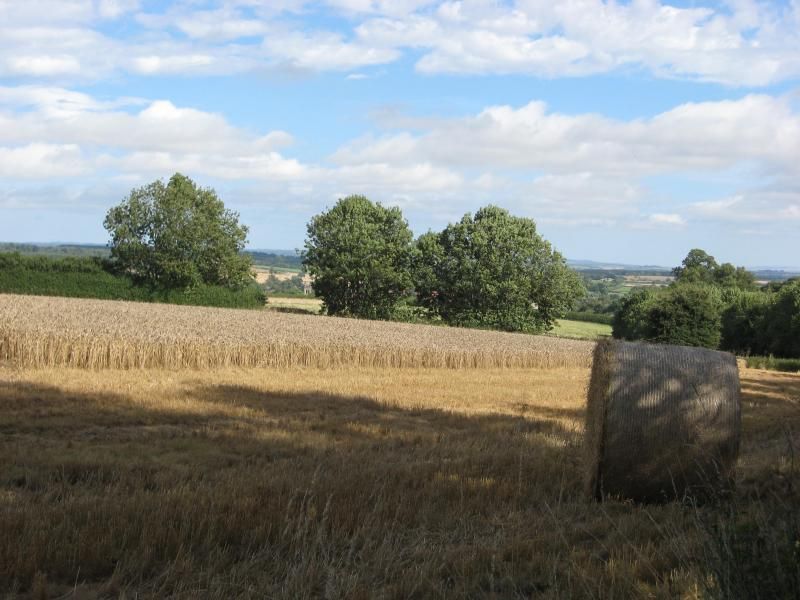
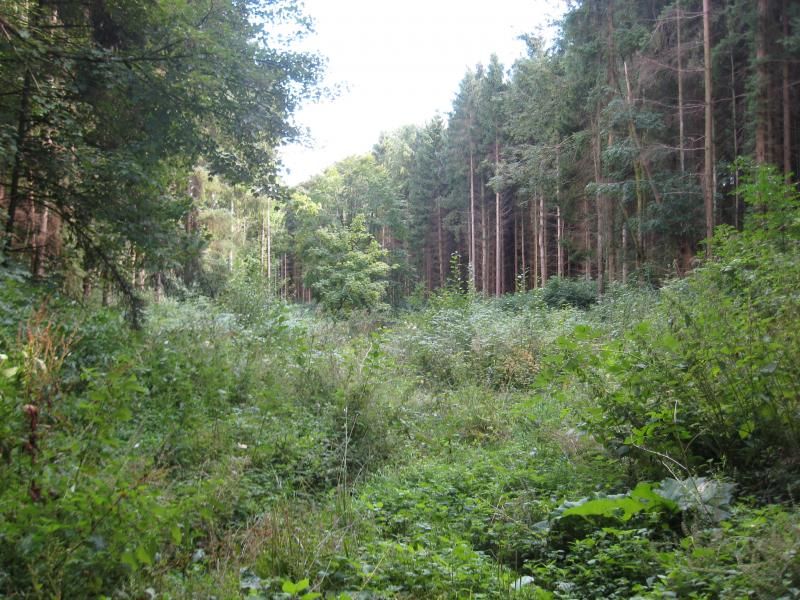
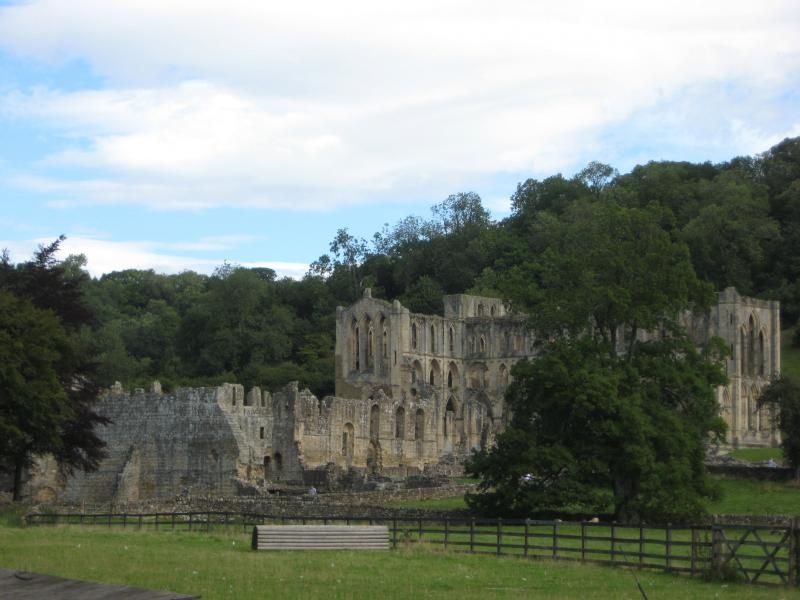
Rievaulx Abbey is tucked away between hills in the middle of nowhere with nothing but a small village nearby. This was intentional. Following the word of Saint Benedict, Cistercian Monks removed themselves from the outside world and worked hard to create self-sustaining environments at Abbeys like this one.
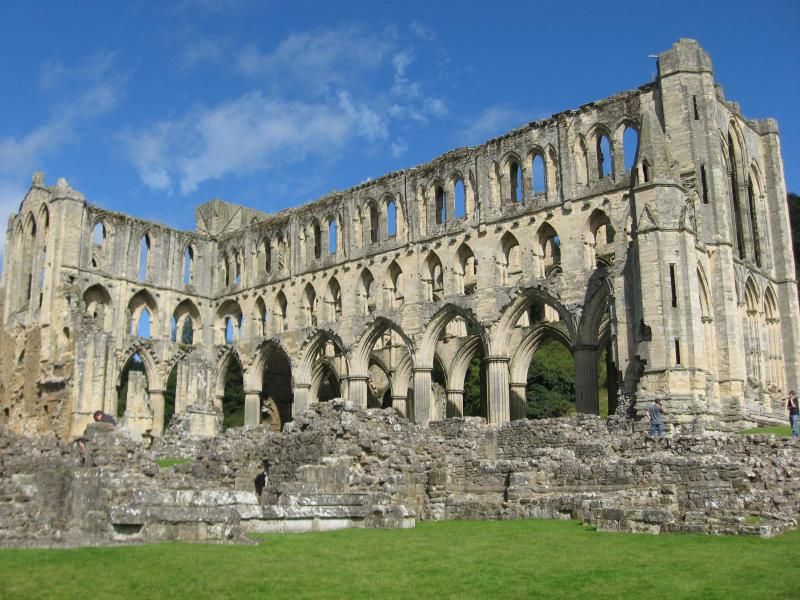
They farmed their own food, made their own textiles and did everything else for themselves, with no reliance on the outside world except to lease farmland from wealthy Lords. It helped that, according to Saint Benedict, true monks survive on only the essentials, denying all worldly excesses and pleasures in favor of worshiping God. It sounds a little bit Buddhist to me; they were even vegetarians, except for specific times when they were allowed to eat fish. They were supposed to shun everything they didn't need in favor of a life on the barest essentials, working for everything they used and spending their days thinking and praying and writing or copying books.
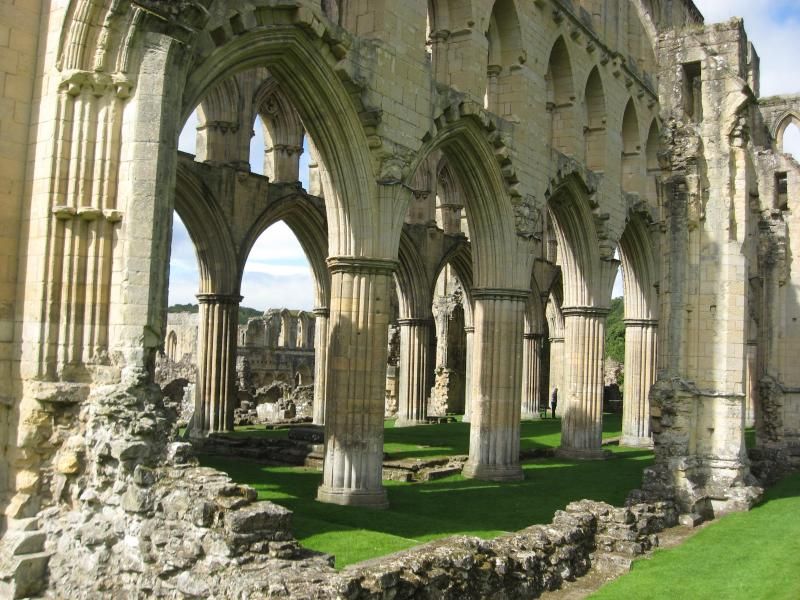
Sometimes I think I might have made a half-decent monk.
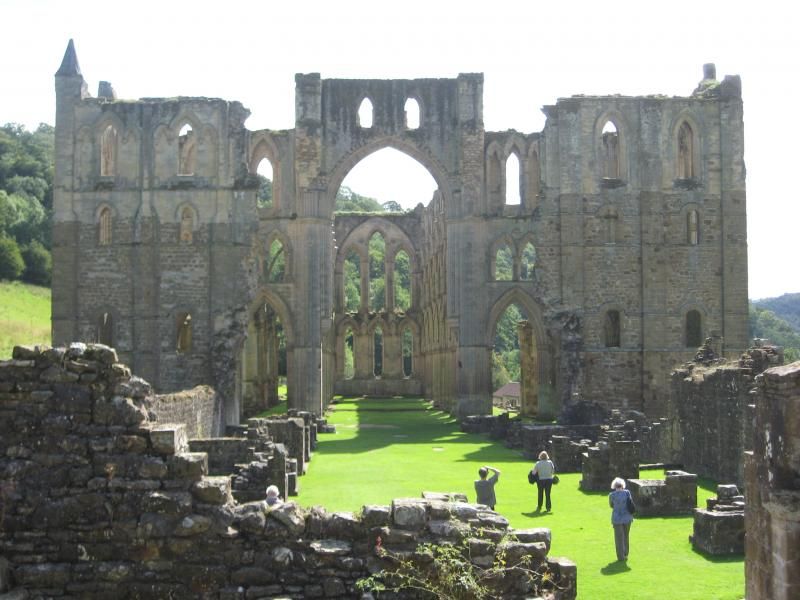
In the 13th century, the monks at Rievaulx started to lose this focus on minimalism, which is when the Abbey started expanding. The Abbot who took over favored more grandiose architecture and a higher standard of living. They even re-routed the nearby river to give themselves more land.

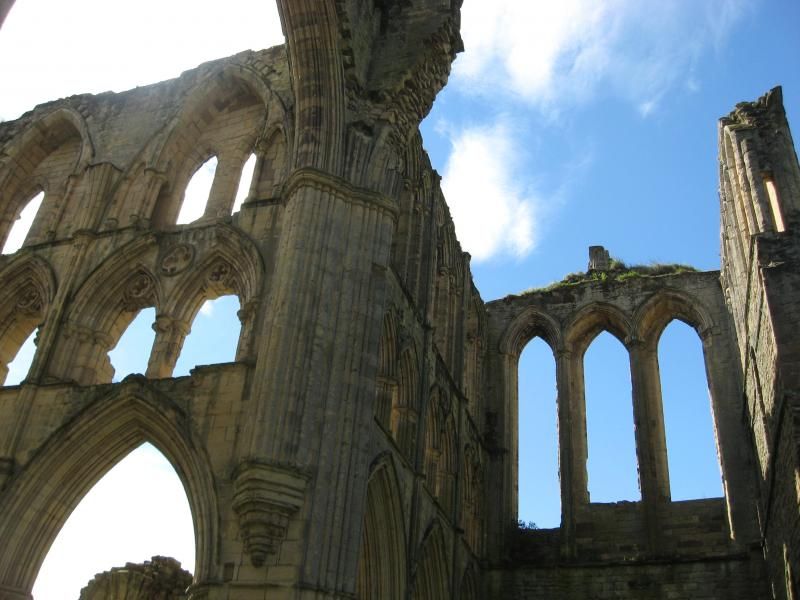
I really respect the minimalist approach to religion - anyone who knows me knows that this is often the approach I take to life - but I would be lying if I said I didn't love the design of the church.
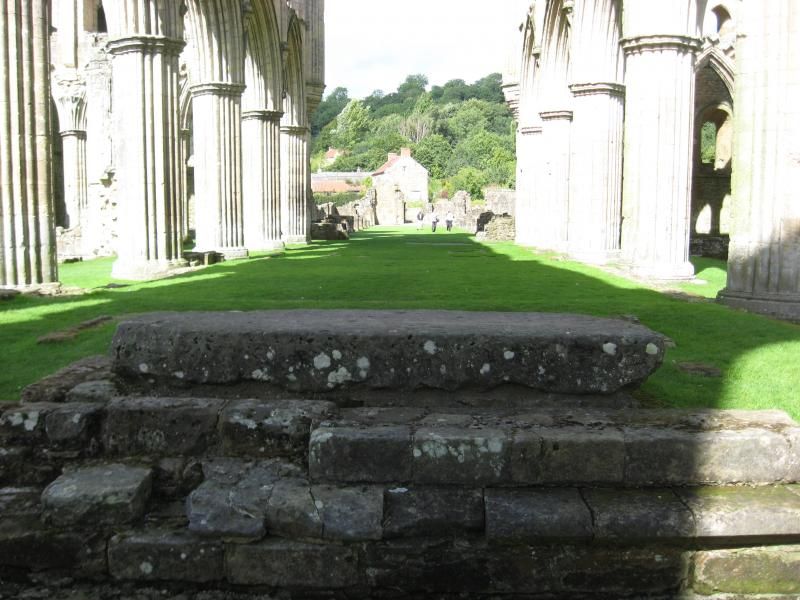
I think the thing I'm going to miss most about the UK is ancient religious sites like this one. There is so much history to these places, history and mythology and beliefs and customs that link together in fascinating ways. Often, especially in a location like this one, the place just
feels spiritual. I love that. This site, Lindisfarne Priory, and Whitby Abbey (which I visited in 2007) are some of my favorite places in the country.
So then I said goodbye to York. Although I haven't spent a lot of time there, I really love the city and the park and am going to miss it just as much as I'll miss places like Newcastle and Norwich.
The hostel I stayed in (YHA) was pretty nice, except there was no kitchen, at least none where guests were allowed to make their own meals. The hostel where I stayed in Prague was like this too. I understand that this is to make more people buy the catered meals, but it's really inconvenient to travelers who are trying to save money and/or travel with food.
Also it's a mile and a half from the train station. Granted, most of that walk is along the river and the weather was pretty nice when I was leaving, but dragging a suitcase, backpack, and bag of food that distance is not the ideal way to travel. It didn't help that about halfway to the station, one of the wheels of my suitcase - which had been jamming off and on for the previous three weeks I had been traveling - broke. As in, the covering came off and one side is now flat. It's a little comical when you look at it, or when you listen to the awful scraping noise it makes when I take it over pavement.
At one point, a tour group passed me, and one gentlemen told me he hoped I wasn't going too far. I lied and said 'no', because I was really not in the mood to explain how far I was going to have to travel before I could stop living out of that stupid, broken thing.
Next: Newcastle, lots of goodbyes, and my last entry for a long time
Advertisement
Tot: 0.127s; Tpl: 0.017s; cc: 10; qc: 47; dbt: 0.0572s; 1; m:domysql w:travelblog (10.17.0.13); sld: 1;
; mem: 1.1mb



















